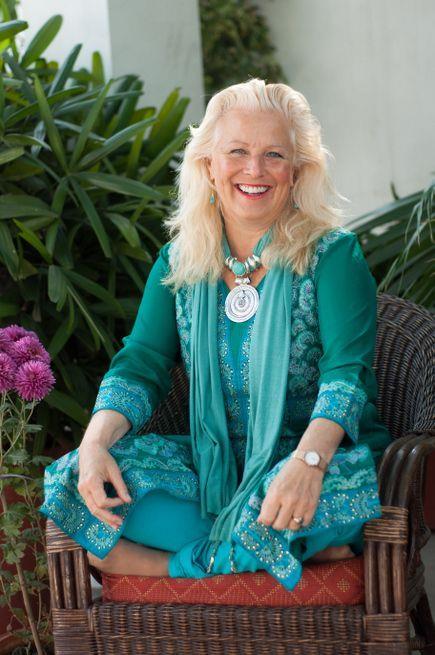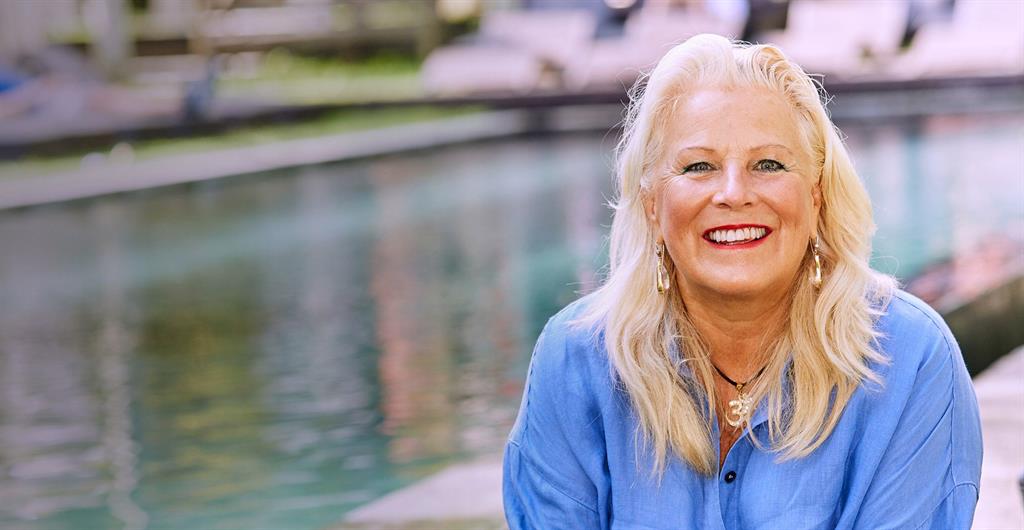A journey to discovery and fulfillment
Letting go of past issues to forgive and heal.
Henriette Lamprecht – It was set to steer her life in a new direction of healing and the self-discovery she so desperately needed. Uncovering deep seated pain and emotions which caused many unnecessary behaviour patterns, Didi Olivier discovered Brandon Bays’ The Journey while struggling with brain swelling. Brandon Bays is the author of amongst others The Journey and The Journey for Kids, a transformation and healing method pioneer, acclaimed best-selling author, speaker and mind healing expert.
During the past 26 years, The Journey Method has spread across the globe and is now available in 48 countries. Attending the first course called The Journey Intensive, deep seated pain from her childhood and school years came to the fore.
“Most of these issues stemmed from my childhood and while in school and included my parents’ divorce, alcohol and sexual abuse and also foster care,” says Didi.
Falling in love with the process she made a promise to herself to help children and adults who shared the same hurt and scars.
“I felt so much lighter and in love with life, I wanted everybody I knew to also go through the process.”
Sourcing funding she trained 170 teachers in Namibia, coming from Keetmanshoop to Lüderitz to Windhoek and Otavi to take The Journey back to their different schools.
“I also started working part time at a primary school in Rehoboth to do a group class process with the kids. The results were amazing.”
Adults and children often have issues and feel trapped, says Didi.
It may be a simple feeling there must be more to life or something as debilitating as depression, painful emotions or serious illness.
The Journey is a step-by-step guide to get to the root of these issues, whether it happened years ago or yesterday.
“Just a few therapy sessions can restore you or your child’s equilibrium and liberate their shining potential.”
People that went through a lot of hurt often proclaim they will never forgive the one who caused their pain, says Didi.
“Through the process you realise you can forgive and still not condone someone’s behaviour. It shows you how to access buried cell memories of things that hurt you in the past and to still find forgiveness, both for yourself and the soul of the person who has hurt you.”
This will free you from the bonding of suffering, Didi explains.
“When we play our emotional stories inside our heads over and over again, it is harmful to our health. Every time we repeat our stories in our mind or out loud, we stir emotions that flood every cell of the body.”
For some people The Journey is a once-off process as the results are “so deep and freeing, they want to bask in it”.
“Unfortunately, life has dumped so many issues on us and it is rather a journey, not just a once-off process and now you’re fixed.”
According to Didi the process is a great tool for kids to overcome trauma and lead them back to their true self.
“For them it’s such an easy process, they slide through it!”
In a nutshell she explains the process as accessing an old memory, feeling each emotion fully, emptying out stored cellular blockages and through it forgiving yourself and others but never condoning abusive behaviour.
“The Journey is a therapeutic process using closed eye visualization which assist one to gain access to stored repressed cell memories and painful past experiences. These cell memories drive our behaviour, actions and belief systems that are often played subconsciously. It facilitates a mechanism to empty out these unconscious blocks and start a path to healing naturally.”
It goes deeper than conventional therapeutic treatments as it clears emotional blockages held in cell memories and has permanent, life changing results, says Didi.
“You work directly with your subconscious to let go of past issues to forgive and heal through your own inner truth.”
If the person is “open and goes deep” the process works immediately.
“Most of the time people will the next day express how great and light they feel.”
According to Didi people usually have a specific issue. Once they delve deeper, they access memories they did not earlier on believed to be the root cause.
As example she uses an adult who has a low self-esteem.
“The Journey uses the question ‘when have you felt this before? And before that and even before that?’”
You go back so deep that your initial low self-esteem that you thought only presented itself in adulthood, was actually a teacher telling you in grade 1 you would never be good in anything. The child at that moment stored it as a reality in their cell memory.” – [email protected]
During the past 26 years, The Journey Method has spread across the globe and is now available in 48 countries. Attending the first course called The Journey Intensive, deep seated pain from her childhood and school years came to the fore.
“Most of these issues stemmed from my childhood and while in school and included my parents’ divorce, alcohol and sexual abuse and also foster care,” says Didi.
Falling in love with the process she made a promise to herself to help children and adults who shared the same hurt and scars.
“I felt so much lighter and in love with life, I wanted everybody I knew to also go through the process.”
Sourcing funding she trained 170 teachers in Namibia, coming from Keetmanshoop to Lüderitz to Windhoek and Otavi to take The Journey back to their different schools.
“I also started working part time at a primary school in Rehoboth to do a group class process with the kids. The results were amazing.”
Adults and children often have issues and feel trapped, says Didi.
It may be a simple feeling there must be more to life or something as debilitating as depression, painful emotions or serious illness.
The Journey is a step-by-step guide to get to the root of these issues, whether it happened years ago or yesterday.
“Just a few therapy sessions can restore you or your child’s equilibrium and liberate their shining potential.”
People that went through a lot of hurt often proclaim they will never forgive the one who caused their pain, says Didi.
“Through the process you realise you can forgive and still not condone someone’s behaviour. It shows you how to access buried cell memories of things that hurt you in the past and to still find forgiveness, both for yourself and the soul of the person who has hurt you.”
This will free you from the bonding of suffering, Didi explains.
“When we play our emotional stories inside our heads over and over again, it is harmful to our health. Every time we repeat our stories in our mind or out loud, we stir emotions that flood every cell of the body.”
For some people The Journey is a once-off process as the results are “so deep and freeing, they want to bask in it”.
“Unfortunately, life has dumped so many issues on us and it is rather a journey, not just a once-off process and now you’re fixed.”
According to Didi the process is a great tool for kids to overcome trauma and lead them back to their true self.
“For them it’s such an easy process, they slide through it!”
In a nutshell she explains the process as accessing an old memory, feeling each emotion fully, emptying out stored cellular blockages and through it forgiving yourself and others but never condoning abusive behaviour.
“The Journey is a therapeutic process using closed eye visualization which assist one to gain access to stored repressed cell memories and painful past experiences. These cell memories drive our behaviour, actions and belief systems that are often played subconsciously. It facilitates a mechanism to empty out these unconscious blocks and start a path to healing naturally.”
It goes deeper than conventional therapeutic treatments as it clears emotional blockages held in cell memories and has permanent, life changing results, says Didi.
“You work directly with your subconscious to let go of past issues to forgive and heal through your own inner truth.”
If the person is “open and goes deep” the process works immediately.
“Most of the time people will the next day express how great and light they feel.”
According to Didi people usually have a specific issue. Once they delve deeper, they access memories they did not earlier on believed to be the root cause.
As example she uses an adult who has a low self-esteem.
“The Journey uses the question ‘when have you felt this before? And before that and even before that?’”
You go back so deep that your initial low self-esteem that you thought only presented itself in adulthood, was actually a teacher telling you in grade 1 you would never be good in anything. The child at that moment stored it as a reality in their cell memory.” – [email protected]








Kommentaar
Republikein
Geen kommentaar is op hierdie artikel gelaat nie